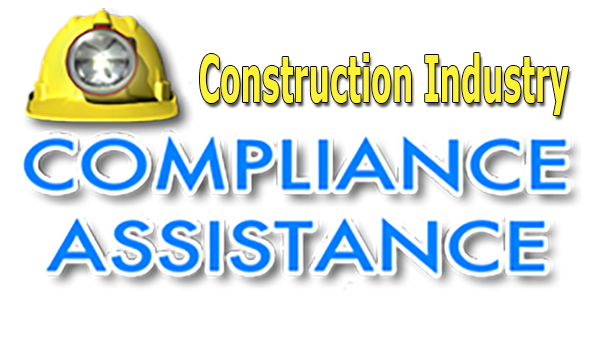
Introduction
On March 25, 2016, the Occupational Safety and Health Administration (OSHA) issued their final rule on respirable crystalline silica. The rule is comprised of two standards, one for the Construction Industry (§1926.1153) and one for General Industry and Maritime (§1910.1053). The construction industry standard applies to all occupational exposures to respirable crystalline silica in construction work and sets a new Permissible Exposure Limit (PEL) of 50 micrograms of respirable crystalline silica per cubic meter of air (50.0 µg/m3) as an 8-hour Time-Weighted Average (TWA). The standard also establishes an Action Level (AL) of 25 µg/m3 as an 8-hour TWA. The standard became effective on June 23, 2016. The construction industry was initially provided one year – until June 23, 2017 – to comply with all provisions except for the requirements for methods of sample analysis. However, on April 6, 2017, OSHA issued a memo to Regional Administrators delaying enforcement until September 23, 2017. Ahead of the enforcement date, OSHA issued another memo to Regional Administrators announcing how the Agency will handle enforcement of the new silica standard for the construction industry.
What is Silica
Crystalline silica is a common mineral that occurs in many naturally occurring and man-made materials used at construction sites. Respirable crystalline silica are very small particles – typically at least 100 times smaller than ordinary sand found on beaches or playgrounds. The very small particles of silica dust can get in the air that you breathe and may become trapped in your lungs, and eventually affect your health.
Respirable crystalline silica is generated by high-energy operations on:
- Asphalt Brick Cement
- Concrete
- Concrete Block
- Drywall
- Fiber Cement products
- Grout
- Gunite/Shotcrete
- Mortar
- Paints containing silica
- Plaster
- Refractory Mortar/Castables
- Refractory Units
- Rock
- Roof Tile (concrete
- Sand
- Soil (fill dirt, top soil, soil w/ fly ash added)
- Stone (granite, limestone, quartzite, sandstone, shale, slate, cultured, etc.)
- Stucco/EIFS
- Terrazzo
- Tile (clay and ceramic)
Examples of silica-generating activities:
- Grinding
- Crushing
- Hauling
- Chipping
- Hammering
- Drilling
- Sawing
- Blasting
- Dry sweeping
- Compressed air
- Mixing mortar or concrete
What is Silicosis
Silicosis is an irreversible, often disabling and sometimes fatal lung disease. Chronic silicosis is the most common type of silicosis and usually occurs after at least 10 years of exposure to respirable crystalline silica. Accelerated silicosis may occur within 5-10 years due to high levels of exposure. Acute silicosis may occur within a few months to less than 2 years due to extremely high levels of exposure. Symptoms include:
- Shortness of breath
- Cough (with or without blood or mucus)
- Fatigue or weakness
- Night sweats
- Fever and loss of appetite may indicate other diseases associated with silica exposure such as TB infection or lung cancer.
- Note: There may be no symptoms in the early stages of the disease.
Other Health Effects of Silica Exposure
- Respirable crystalline silica is listed as a known human carcinogen by the National Toxicology Program (NTP) and the International Agency for Research on Cancer (IARC)
- Silica exposure has been associated with:
- COPD, including chronic bronchitis and emphysema.
- Several types of kidney disease, including end stage renal disease.
- Autoimmune conditions, including progressive systemic sclerosis, systemic lupus, erythematosus, and rheumatoid arthritis.
- Increasing an employee’s chances that latent TB will develop into active pulmonary TB infection.
- Lung Cancer.
Overview of the Rule
The first step for an employer is to determine if the standard applies to its work. If its work is covered by the standard, an employer has two options for limiting employee exposure to respirable crystalline silica:
- Specified exposure control methods; or
- Alternative exposure control methods.
Employers who choose the specified exposure controls option must fully and properly implement protections for the tasks or equipment listed in Table 1 of the standard. Employers who fully and properly implement the controls in Table 1 do not have to assess employees’ silica exposure levels or comply with a permissible exposure limit (PEL) for those employees.
Employers who follow alternative exposure control methods must:
- Determine the levels of respirable crystalline silica that employees are exposed to;
- Limit employee exposures to a PEL of 50 micrograms per cubic meter of air (50 μg/m3) as an 8-hour time-weighted average (TWA);
- Use engineering and work practice controls, to the extent feasible, to limit employee exposures to the PEL, and supplement the controls with respiratory protection when necessary; and
- Keep records of employee exposure to respirable crystalline silica.
All employers covered by the standard must:
- Provide respiratory protection when required;
- Restrict housekeeping practices that expose employees to respirable crystalline silica where feasible alternatives are available;
- Establish and implement a written exposure control plan, including designating a competent person;
- Offer medical exams to employees who will be required to wear a respirator under the standard for 30 or more days a year;
- Communicate hazards and train employees; and
- Keep records of medical examinations.
Related Information and Resources
Construction Silica Rule Presentation
OSHA Silica Final Rule Webpage
OSHA Small Entity Compliance Guide for the Respirable Crystalline Silica Standard for Construction
NIOSH, Workplace Safety & Health Topics, Silica Webpage
American Lung Association, Silicosis Webpage
For more information, visit our member-only silica webpage, which has a host of resources—sample forms, webinars, flowcharts, FAQs, and more—to help AGC members understand their compliance responsibilities.
